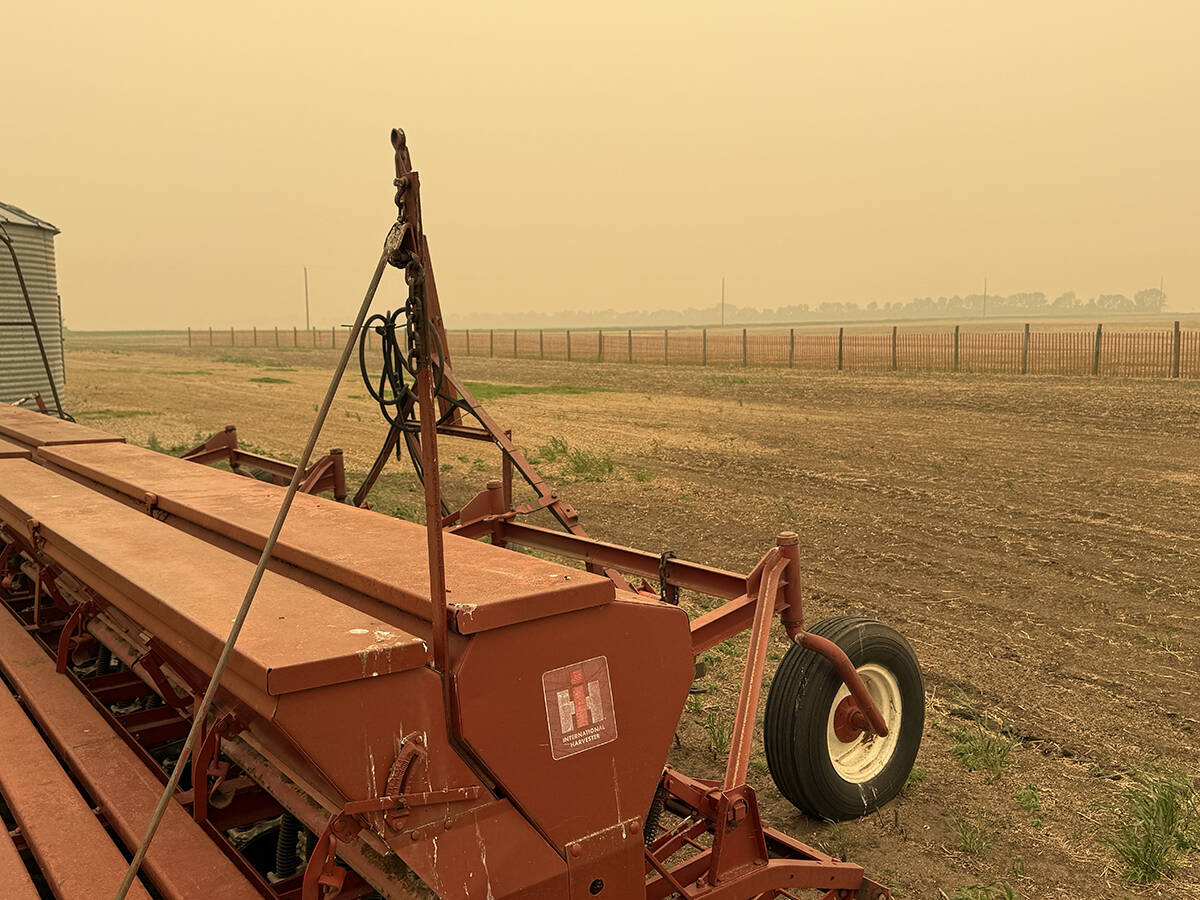EDMONTON – This year will not be remembered as one that was kind to Alberta beekeepers.
When they opened their hives last spring, they found 44 percent of bees were either dead or weakened by a combination of cold weather and pests.
Kevin Nixon, president of the Alberta Beekeepers Commission, said varroa mites, which are believed to be the major culprit, seem to spread unchecked.
As well, hail in southern Alberta and drought in the Peace River country in the north added more stress.
Read Also

Wildfires have unexpected upside this year
One farmer feels smoke from nearby wildfires shrouded the July skies and protected his crop from the sun’s burning rays, resulting in more seeds per pod and more pods per plant.
“This year was a struggle,” he said during a break in the commission’s convention.
The average honey crop in the past five years has been 140 pounds per hive. In 2007 it dropped to 97 lb. per hive and 90 lb. in 2008.
A major struggle facing beekeepers is finding registered chemicals that can fight varroa mites.
Nabr Chaudhary, an Alberta Agriculture economist, estimated that overwintering losses cost Alberta producers $17 to $24 million in lost revenue from the combination of lower honey crop, lower pollination income and the cost of replacement bees.
In August, beekeepers obtained emergency use registration for Apivar to help fight varroa mites.
The emergency use registration failed to arrive in time for some producers’ fall treatment, but may be used next spring before it expires in April.
Alberta producers used 140,000 of the 240,000 Apivar strips that Canada imported.
Only producers who could show resistance to other products in their hives were eligible for the treatment.
Nixon said the treatment he used earlier in the year to control the mites didn’t work, and he was forced to use Apivar in the fall.
“It was another added expense,” said Nixon, who is concerned the treatment may have come too late to save his damaged bees.
“We’ll see in the spring if it works. There’s a lot of people in the same situation.”
Nixon said the industry needs registered chemicals to control pests in bees that can be used in rotation.
He called the Canadian registration process long and arduous.
“It’s a frustrating thing.”
In 2007, Alberta’s 726 beekeepers and their 246,000 colonies were responsible for 12,477 tonnes of honey, which was about 40 percent of total production in Canada.














